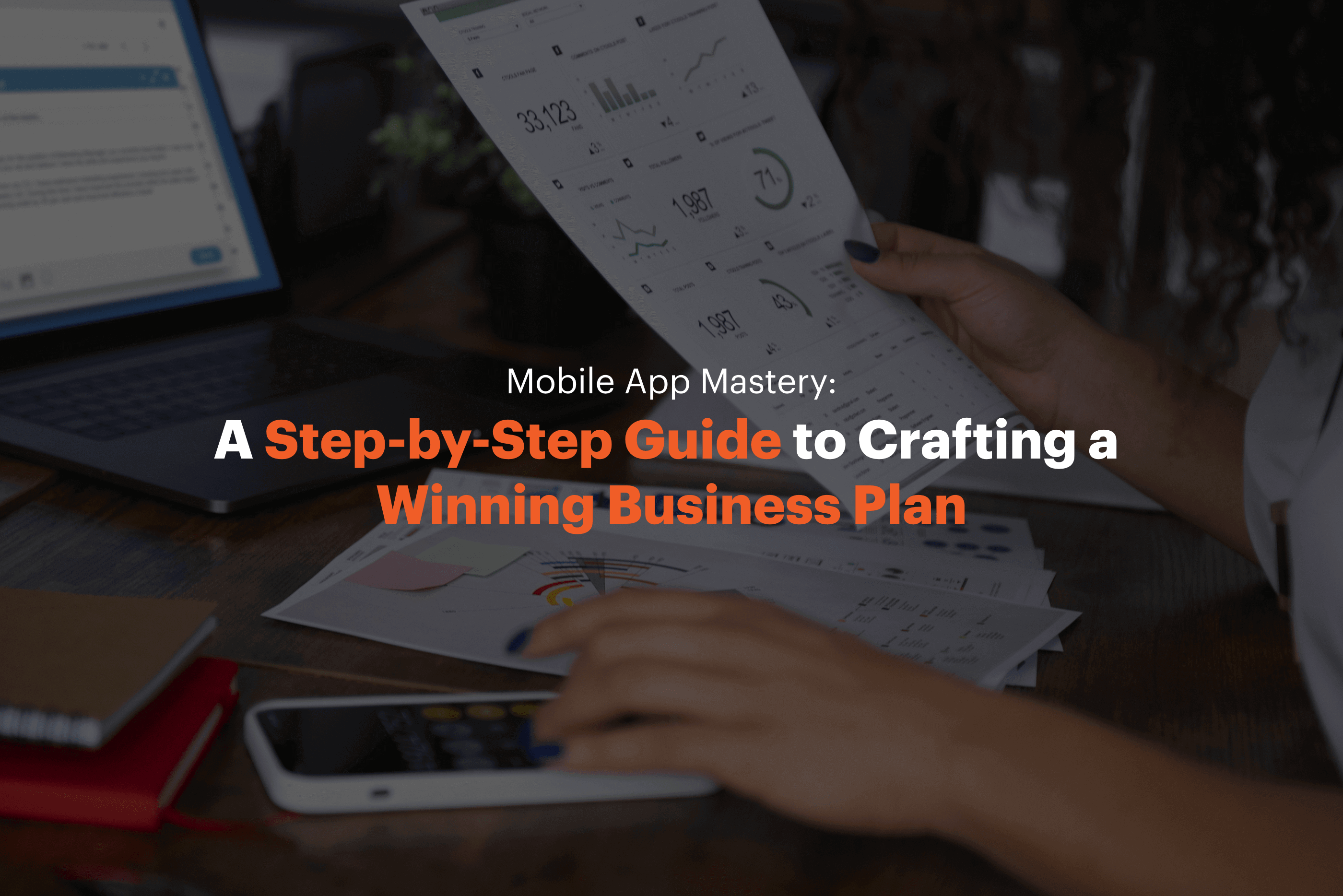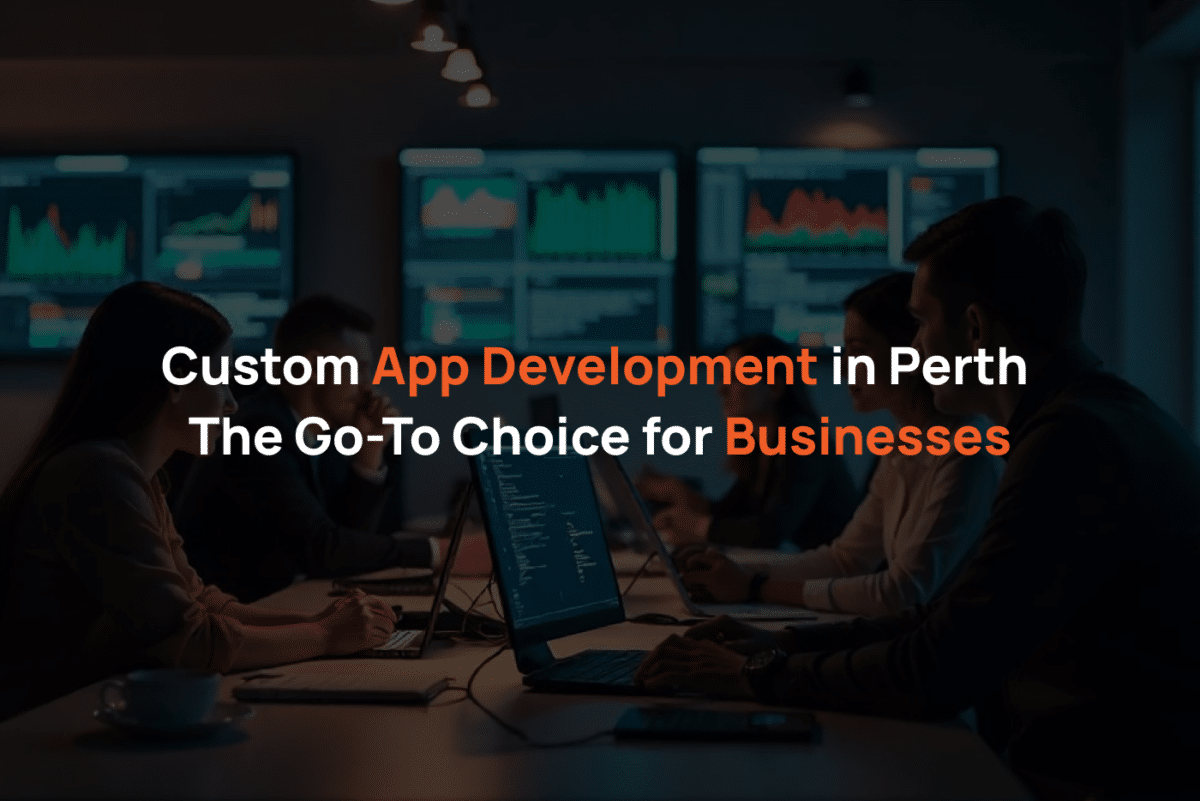Contact Us
If you have made it this far, you are here with a reason. You need our help! We are super friendly and genuinely care to help you succeed.
Enquire today to receive a FREE consultation with an App Guru.
Get in Touch
info [at] appgurus.com.au
In today's digital age, mobile apps have become an integral part of our lives. From communication to entertainment, and even business operations, mobile apps have transformed the way we interact with technology. If you're an aspiring entrepreneur with a brilliant mobile app idea, it's essential to have a well-crafted business plan to turn that idea into a successful venture. In this comprehensive guide, we will walk you through the step-by-step process of creating a winning business plan for your mobile app business. Whether you're seeking investment or simply want to define your goals and strategies, this guide will equip you with the necessary tools and insights to navigate the competitive app market.
Understanding the Purpose of Your Business Plan
Before embarking on the journey of crafting a winning business plan for your mobile app, it's essential to grasp the fundamental purpose of such a plan. A business plan acts as a comprehensive roadmap that delineates various crucial elements of your app's trajectory. It serves as a guiding document that outlines your app's vision, identifies the target audience, defines the monetization strategy, establishes the marketing plan, and provides financial projections.
At its core, a well-defined business plan ensures that you maintain focus on your goals and objectives throughout the app development process. It acts as a strategic tool that not only aligns your team but also communicates the potential of your app to potential investors, partners, and stakeholders. By encapsulating your app's vision within the business plan, you create a tangible framework that helps you navigate the complexities of the mobile app industry.
First and foremost, a business plan allows you to clearly articulate the vision behind your mobile app. It helps you elucidate the problem your app solves, the value it offers, and the unique features that set it apart from the competition. By defining your app's vision, you provide a compelling narrative that can resonate with both users and investors, fostering a sense of confidence and enthusiasm.
Furthermore, a business plan helps you identify and understand your target audience. Through market research and analysis, you can gain insights into the demographics, preferences, and behavior patterns of your potential users. This knowledge enables you to tailor your app's features, design, and marketing strategies to effectively target and engage your audience.
A well-crafted business plan also encompasses a monetization strategy that determines how your app will generate revenue. It explores various monetization models, such as in-app purchases, subscriptions, or advertising, allowing you to choose the most suitable approach based on your app's unique characteristics and target audience. By clearly outlining your monetization strategy, you not only demonstrate the financial viability of your app but also provide a roadmap for sustainable growth and profitability.
In addition to revenue generation, a business plan lays out a comprehensive marketing plan. It helps you identify the most effective channels and strategies to promote your app, such as app store optimization (ASO), social media marketing, content creation, influencer collaborations, and paid advertising. A well-executed marketing plan ensures that your app reaches its intended audience, builds brand awareness, and drives user acquisition and retention.
Financial projections form a crucial component of your business plan. They provide an in-depth analysis of the anticipated costs, revenue streams, and profitability of your app. By projecting financial metrics and conducting a break-even analysis, you can assess the feasibility of your app and demonstrate its potential return on investment to stakeholders.
Ultimately, a business plan serves as a comprehensive tool that communicates the vision, market potential, monetization strategy, marketing plan, and financial projections of your mobile app. It not only acts as a roadmap for your team but also instills confidence in investors, partners, and stakeholders. By devoting time and effort to crafting a well-defined business plan, you lay a strong foundation for your mobile app business and increase the likelihood of its success in the competitive app market.
Market Research and Competitive Analysis
To ensure the success of your mobile app business, conducting thorough market research and competitive analysis is paramount. This process involves delving deep into your target market and comprehending the competitive landscape. By doing so, you can effectively identify your app's target audience, understand their needs, preferences, and pain points, and position your app to meet those demands effectively.
Start by identifying your app's target audience. Conduct extensive research to gain insights into their demographics, behavior patterns, and technological preferences. Understand their motivations and challenges, as well as their expectations from mobile apps in your niche. This knowledge will guide you in developing features and functionalities that cater specifically to their needs.
Additionally, conducting a comprehensive competitive analysis is crucial. Identify direct and indirect competitors in your market space. Study their offerings, strengths, weaknesses, and user feedback. This analysis will help you identify gaps or areas for improvement in the existing market, allowing you to position your app as a unique and compelling solution.
Differentiation is key in a saturated app market. Analyze the unique value proposition (UVP) of your competitors' apps and identify ways to differentiate yours. Determine how your app can provide additional value or a superior user experience. This could be through innovative features, improved usability, better customer support, or a more visually appealing design. By highlighting these differentiators, you can attract users who are seeking a fresh and improved solution compared to existing apps.
Ultimately, thorough market research and competitive analysis provide you with valuable insights that shape your app's strategy and positioning. By understanding your target audience and analyzing the competition, you can tailor your app's features, design, and marketing messages to effectively meet user needs and stand out in the market.
Defining Your App's Unique Selling Proposition (USP)
Your app's unique selling proposition (USP) is the differentiating factor that sets it apart from the competition and captures the attention of users. It is essential to clearly define the core features, functionalities, and benefits that make your app unique and valuable in order to effectively communicate its value proposition.
Highlight how your app solves a specific problem or addresses a pain point that users currently face. Emphasize the advantages and benefits your app offers, such as time savings, convenience, cost-effectiveness, or enhanced user experience. Clearly articulate how your app provides a better solution or user experience compared to existing apps in the market.
By defining and promoting your app's USP, you create a compelling reason for users to choose your app over competitors. Whether it's a groundbreaking feature, a more intuitive interface, or superior performance, emphasizing what makes your app special will help attract and retain users who are seeking a solution that goes beyond what is currently available.
Monetization Strategy
Monetization is a crucial factor to consider when creating a business plan for your mobile app. It involves determining how your app will generate revenue and sustain profitability. To accomplish this, you should explore various monetization models available in the market.
Consider options such as in-app purchases, subscriptions, and advertising. Each model has its own advantages and disadvantages, so it's important to evaluate them carefully. In-app purchases allow users to buy additional features, virtual goods, or content within the app. Subscriptions offer users access to premium features or content for a recurring fee. Advertising involves displaying ads within the app to generate revenue from advertisers.
When selecting a monetization model, it's essential to consider your app's target audience and their willingness to pay. Analyze the market trends, competition, and user behavior to determine which model aligns best with your app's goals and long-term sustainability. You may also consider a combination of monetization models to maximize revenue potential.
Ultimately, choosing the right monetization strategy for your mobile app is vital for its financial success. Careful evaluation and selection of the appropriate model will enable you to effectively generate revenue while providing value to your users.
Marketing and User Acquisition
Developing a strong marketing strategy is crucial for the success of your mobile app. It involves defining the channels and tactics that will effectively reach your target audience and drive user acquisition and engagement.
Start by identifying the marketing channels that are most relevant to your app. This can include leveraging app store optimization (ASO) techniques to improve your app's visibility in app stores, utilizing social media platforms to engage with your target audience, creating compelling content that showcases the value of your app, collaborating with influencers to reach a wider audience, and considering paid advertising to boost your app's visibility.
In addition to defining the marketing channels, it's essential to develop a user acquisition plan. This plan outlines how you will attract and retain users, such as through targeted advertising campaigns, referral programs, or partnerships with relevant businesses or platforms. Focus on strategies that align with your app's value proposition and resonate with your target audience.
Moreover, emphasize user engagement and retention strategies. This can include personalized communication, in-app notifications, loyalty programs, regular updates and feature enhancements, and gathering and responding to user feedback. These strategies will help you keep users engaged, satisfied, and more likely to advocate for your app.
By creating a comprehensive marketing strategy that encompasses various channels and tactics, as well as a user acquisition and engagement plan, you will maximize the reach and impact of your app in the market. Continuously monitor and analyze the results of your marketing efforts, and be willing to adapt and optimize your strategies as needed to ensure long-term success.
Technical Requirements and Development Timeline
When it comes to developing your mobile app, it's crucial to have a clear understanding of the technical requirements involved. This includes deciding on the platforms and programming languages you will use, as well as establishing a development timeline.
Start by determining the platforms on which you plan to launch your app. The two most popular platforms are iOS and Android. Consider your target audience, market share, and budget when deciding whether to develop for one or both platforms. Each platform has its own requirements and development frameworks, such as Swift or Objective-C for iOS and Java or Kotlin for Android.
Next, select the programming languages that best align with your chosen platforms and your team's expertise. It's important to consider the language's compatibility, performance, and support within the development community.
Outline a development timeline that includes milestones and estimated completion dates. This provides a roadmap for your app's progress and allows you to track the development process effectively. Milestones can include completing the user interface (UI) design, implementing core functionalities, conducting beta testing, and preparing for app store submission. Be realistic with your estimates and consider potential challenges or delays that may arise during the development process.
By providing an overview of the technical requirements and development timeline, you give stakeholders and team members a clear understanding of the app's progress and development roadmap. This ensures transparency and helps manage expectations throughout the development process.
Team and Organizational Structure
In your mobile app business, it's essential to outline the key team members and their roles to showcase their expertise and contributions to the success of the venture. Identify individuals responsible for areas such as app development, design, marketing, and operations. Highlight their relevant experience, skills, and qualifications. Additionally, discuss the organizational structure, including reporting lines and decision-making processes. Consider any external resources or partnerships you may require, such as app development agencies, freelancers, or marketing consultants. Clearly defining the roles and structure of your team ensures efficient collaboration, accountability, and the ability to leverage external expertise for specific needs, ultimately driving the success of your mobile app business.
Financial Projections and Funding
When presenting a detailed financial projection for your mobile app business, it's crucial to include revenue forecasts, cost estimates, and a break-even analysis. This will provide stakeholders with a comprehensive overview of your app's financial viability and potential return on investment.
Start by outlining your revenue forecasts, taking into account your monetization strategy and projected user acquisition. Consider factors such as in-app purchases, subscriptions, advertising revenue, and any other revenue streams your app may generate. Utilize market research and industry benchmarks to make realistic revenue projections.
Next, estimate your costs, including development expenses, marketing and advertising costs, operational expenses, and any other relevant expenditures. Ensure that you account for both fixed costs (such as salaries, rent, and software licenses) and variable costs (such as hosting fees and customer support expenses).
Conduct a break-even analysis to determine the point at which your app's revenue equals its total costs. This analysis helps you understand the time frame and user base needed to reach profitability.
Additionally, discuss your funding requirements. This may involve personal savings, loans, or external investments from angel investors, venture capitalists, or crowdfunding platforms. Clearly articulate how the funding will be utilized and the expected return on investment for potential stakeholders.
By presenting a detailed financial projection, you demonstrate your app's financial viability, sustainability, and potential for growth. It also allows stakeholders to assess the risks and rewards associated with investing in your mobile app business.
In conclusion, crafting a winning business plan is an essential step in transforming your mobile app idea into a successful business venture. By following this step-by-step guide, you'll have a clear roadmap to execute your vision, attract investors, and navigate the competitive app market. Remember, a well-defined business plan not only helps you stay focused on your goals but also showcases your app's potential to the world. With careful planning and execution, you can turn your mobile app dreams into reality.


